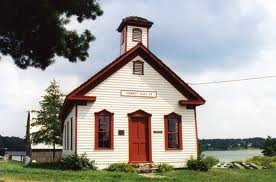
by Gloria Romero
The school-choice movement has just surmounted one of its most pervasive challenges. A unanimous Indiana Supreme Court upheld the constitutionality of that state’s voucher program, which makes some 500,000 low- and middle-income kids (or, about 62 percent of its families) eligible for state aid to help pay for a private or religious school. The decision cuts to the core of the most profound education debate: What, exactly, does “public” mean in “public education” and who decides?
The court ruled that Indiana is serving valid educational purposes, both by maintaining a traditional public school system and by providing options to it. In other words, that government’s role is to ensure that essential services are available to the people – but the government itself does not always need to be the actual provider.
Thus, with voucher laws such as Indiana’s, “public” money follows the “public,” which is the family directly – not the “publicly” operated schoolhouse. Hence, families get to choose where to spend the public money: on a schooling choice made by them, or on a schooling choice made by a government official.
Historically, the fight over funding in K-12 public education has been interpreted as the strict allocation of public, taxpayer dollars to publicly operated institutions only. Essentially, this has resulted in the protection of monopoly rights of government-run schools. Students are assigned by government officials to a “local” public school, based on ZIP code. This ZIP code-restricted system has largely given rise to today’s parent empowerment movement, where more and more parents – especially in inner cities – have fought back against a system that not only assigns them to a particular school, but restricts them from leaving – even if that school chronically underperforms.
Indeed, few incentives exist to transform these schools, which sometimes seem to operate more as massive public-works programs for adults. Charter schools, open-enrollment policies and parent trigger laws have all been based on the fight for greater parent rights in public education.
The Indiana decision upholds the meaning of “public” that school choice proponents embraced, and which teachers unions and traditional school district boards had resisted: that “public” includes families, and public monies can be used directly by parents. Fundamentally, the debate has shifted from a simple financing of “neighborhood” schools to financing of families themselves. Parents will make the best choices for their own child. It could be a private school or a traditional neighborhood school.
Truly, the decision underscored that public dollars go with the “public” student – not with the buildings in that student’s neighborhood that are operated by a public school agency and to which that student historically had been automatically assigned.
The financing monopoly long enjoyed by government-run public schooling entities has been shattered. Already, 17 states offer programs allowing parents to use “public” money for education in varying ways, including the use of tuition vouchers. The question remains as to whether these programs – some also undergoing their own legal challenges – also will survive legal challenges.
If so, in the world of education reform and public financing, the Indiana decision will have clearly established that a new era has arrived.
Editor’s note: This post originally appeared in the Orange County Register.


